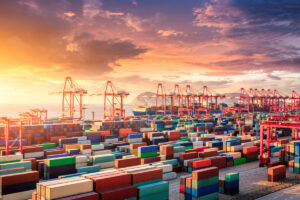Sea-Intelligence has found that carriers’ profits during the freight rate peak have not been a contributing factor to inflation.
Freight rates were a little over 200 per cent higher than in the comparative period in 2019 at its peak. For the shipping lines, their combined 2021 and 2022 profits were more than $400 billion.
However, when these revenues are compared to the value of products carried, carriers’ profits are exceedingly modest, as Sea-Intelligence explains. Even when focusing solely on product categories typically transported in containers, the firm deems them to be of minimal significance.
READ: Xeneta data conveys shift in ocean freight rates
According to the International Monetary Fund (IMF), the global average inflation rate in consumer prices in 2021 was 4.7 per cent, increasing by 4.0 percentage points to 8.7 per cent in 2022.
Sea-Intelligence can gauge the impact of carriers’ profits on inflation by comparing them to the value of global merchandise trade. Essentially, the rise in carriers’ profits from one year to the next reflects the additional inflation for that year.
READ: Hapag-Lloyd’s data conveys 29 per cent rise in cost inflation
Alan Murphy, CEO of Sea-Intelligence, commented: “As shown in Figure 1, carriers’ added profits account for only a minor explanatory variable. Seen over the full period covering 2020-2022, global inflation has been a cumulative 17.5 per cent.
“In the same period, the cumulative effect from the carriers’ increased profits has been 0.9 per cent. For added context, it should be noted that the sharp drop in carrier profits in 2023, will add a deflationary component to world inflation.”










